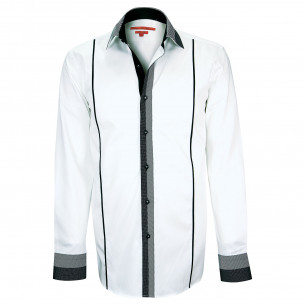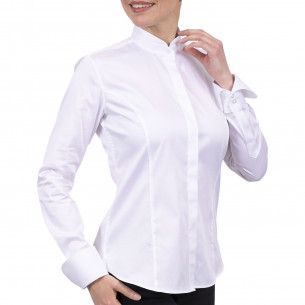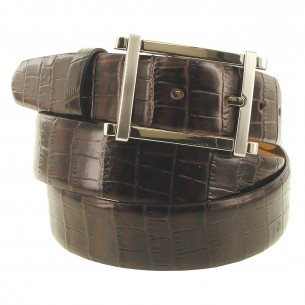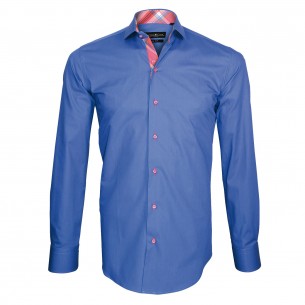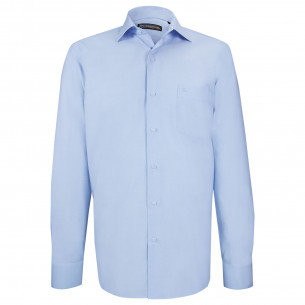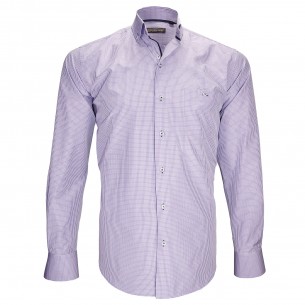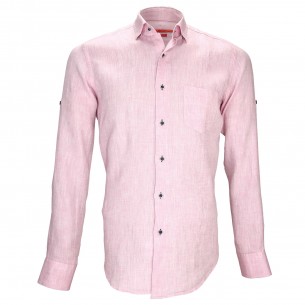Men's shirt online
The Internet, which was originally conceived as a simple communication tool, was made available to the general public in 1990 and soon became an immense commercial machine. August 11, 1994 is, from this point of view, a historical date. It was indeed that day that the first online purchase by credit card secured by encryption software took place. It was not a shirt or even a garment, but a compact disc. That same year 1994 is also the year of the founding of Amazon, a site that would purely and simply revolutionize online commerce. Fruit of a capitalist society, we see that the Internet was quick to take the fold. However, it quickly became apparent that this tool could be used to move the market towards a more equitable model, a "win-win" model. Another major development was made possible by e-commerce: allowing each brand, each manufacturer and each producer to reach the customer directly, without having to go through distribution and distribution networks. This direct dialogue that can now be established between the producer and the consumer must lead both to give the right price to the products, without a number of intermediaries come to weigh down the bill. On the condition, of course, that ethics is part.
E-commerce with ethics
Fashion has long since become an industry. This was not done in a day, but the sixties marked this turning point, when declined the manufacture and factories to leave room for factories and ready-to-wear. There were many positive points to this paradigm shift. Fashion was liberated, and it took part in a new breath, more libertarian and less rigid, which took hold of the entire West. The flip side of the coin is that from a human-scale production to a small series, we have moved to mass production. And as always in these cases, the object of the transformation loses some of its soul at the same time as, inevitably, it is standardized.
Working in the garment industry and their commercialization for two generations, when e-commerce began to develop, it immediately became apparent that we could find two significant advantages. Selling men's shirts online was having the ability to do without almost any intermediary to market our products live, from producer to consumer. This meant that we could enjoy complete creative freedom and that we could sell our shirts online at the fairest price, bypassing the usual margins taken by traditional intermediaries. That is why we launched, more than ten years ago, our e-commerce site, ChemiseWeb.com. As its name suggests, we originally intended to sell exclusively shirts in lines. But it soon became clear that this specialty attracted many customers who frequently asked us if we were thinking of selling polo shirts, ties, cufflinks and other fashion accessories. That's why we have, over the years, expanded our range to include not only hundreds of men's shirts and women's shirts, but also sweaters, socks and scarves in addition to the accessories mentioned above.
The idea that led to the birth of Chemiseweb.com, was therefore to reinvigorate, modestly, a little soul to this industry by selling shirts online. To do this, it was necessary to find a middle ground between the mass production and the confection, to find the freshness of the creative freedom, to manufacture clothes being guided by the pleasure and not only by the profit. Let's hear well. It was not a question of setting up a utopia, nor of being more royalist than the king, but simply of going back to certain basics of our profession. We are here to make a living by providing a service to our customers. But beyond the service - the fact of putting at your disposal a shirt or other clothing that you need - there is also and especially in the field of fashion, the notion of pleasure. It is a question of meeting a material expectation while satisfying the tastes of the greatest number. Therefore, to do this, it seemed essential to us to work in a way that was not only governed by the need to make profit, but also by taking pleasure in doing so. The question of profit is obviously not foreign to us. No need to hide your face. We must earn money to pay our employees. But again, it seemed to us that by breathing a little bit of ethics in our way of doing things, it was possible to generate reasonable profits, to correctly compensate the people we work with without aiming for ever more profitability. We are above all a French family business, deprived of shareholders and therefore free of all obstacles. Our desire has always been to keep control of the entire process, from product creation to after-sales service. To do this, we wanted to relocate as little as possible our activities to, on the contrary, to work people in whom we have confidence here. First, we have minimized marketing and advertising costs by addressing these issues internally. You should know that these two budgets weigh heavily on traditional clothing brands and that the sums invested in these items of expenditure are obviously passed on to the selling price. By working these two questions by ourselves, we are able to generate a mass economy and reduce our selling prices.
Excellence at the right price
In addition, we carefully supervise the manufacture of each of our shirts. To do this, there is no alternative but to be on site, at the factory, when the prototypes are made. We have them redo as many times as necessary until we arrive at a product that is absolutely satisfactory and devoid of any defects. Nothing is left to chance. From the quality of the fabrics to the buttonholes, we control, correct and validate all the steps of the creations. So when the products are delivered to us, we never have unpleasant surprises and we can put them online and offer them for sale immediately. Unlike big brands, we manufacture in small quantities. This allows us to sell all of our inventory, to ship nothing, and to renew our models regularly.
More than a thousand shirts online
With more than a thousand shirts online - 725 models of men's shirts, 226 models of large shirts and 160 models of women's shirts - Chemiseweb.com now has one of the richest catalogs of the French web. If we add to this that our shirt models are produced in small series that are not renewed after the exhaustion of stocks and that we propose two new collections a year, as well for the shirt man and woman that big size, we will have We understand that our concern is to offer you models of exclusive shirts, clothes that will allow you to stand out while responding to your tastes and expectations. This diversity is also the fruit of our policy of free creation. We do not impose any barriers and when we decide to design an original model, we never wonder if it would have been better to be consensual. Our pleasure is in creation and we want to believe that this pleasure, we share it with our customers.
From shirt to polo, there is only one step!
Fashion creations are rare. Yet there is one of importance that will soon celebrate one hundred years of existence and that we owe a French. It's just polo. It was therefore tempting to own this iconic unisex accessory and deliver our own interpretation to our customers. Who does not have a polo shirt in his wardrobe. This top is one of the most popular and its success is not only French, but international. Everything started from France in the twenties, and from the brilliant idea of two compatriots, the tennis player René Lacoste and the industrialist André Gillier. René Lacoste is not then a stranger, far from it. In the 1920s, he won Rolland Garros three times, twice the US Open and twice Wimbledon and is holder of two Davis Cups. In 1927, he was ranked as the best tennis player in the world. With such a track record one would be entitled to wonder how his name found himself so strongly associated with the world of fashion. René Lacoste defines himself more willingly as an inventor than as a top-level sportsman. But it is nevertheless his practice of professional tennis tennis that will lead him to get involved in clothing.
On courts of lawn or clay courts, tennis players then wear canvas pants and long-sleeved shirts. René Lacoste is the first to wear a short-sleeved shirt, which allows him to have more freedom of movement in his game and less sweat. But that does not satisfy him fully. He then decides to draw himself a prototype of clothing that will become the ancestor of the polo. To do so, it is inspired by the dress of the British polo players, hence the name it gives to this new garment. It is a kind of T-shirt with short sleeves and a small collar with two buttons. The cut is large enough to leave the tennis player the ease necessary for his game, and sufficiently adjusted to absorb perspiration. Last detail, René Lacoste had a stitched crocodile affixed on the left side of the chest. This is not yet the emblem of the brand that we know, but the symbol of its founder that the sports journalists of the time had named the alligator because of his aggressive play. But before the polo is marketed and the Lacoste brand is created, it was not until 1933 and the meeting between René Lacoste and André Gillier. This industrialist, owner of a major knitting and underwear factory, will help René Lacoste perfect his invention. It is he who invent, at the request of Lacoste, the famous quilted cotton fabric that will become emblematic of polo. Soft, resistant, absorbent and possessing a beautiful fall, this fabric has all the qualities required for a sporting use.
From 1933, the Lacoste brand, driven by the success of its flagship product, polo, continues to grow. Not only in France, but also everywhere in Europe, the United States or Japan. So much so that polo's popularity extends to almost every continent. Even more surprising, its sporting use is immediately diverted into a fashion accessory, both elegant and casual, mainstream. Not only did René Lacoste invent an iconic ready-to-wear brand, but even better, he gave birth to a must-have fashion accessory. In more than 85 years of existence, the polo has had many occasions to demonstrate that it was timeless. Other major brands were not mistaken who seized the polo in their turn: the English Fred Perry or the American Ralph Lauren to speak of two of the most emblematic of them.
Specialist in the sale of shirts online, ChemiseWeb.com has started in turn for some years in the making of polos. Polo shirts with short sleeves, polo shirts with long sleeves or polos topped with small collars of shirts are in our catalog. Less polished than the shirt but more elegant than the T-shirt, polo can be worn on all occasions. That's why it seemed natural to sell, in addition to our shirts, some models of polos online.
New arrivals
-
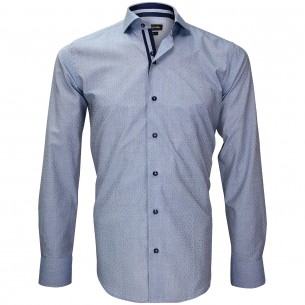
Sales
Shirt pick and pick fabric
CINECITTA
Cut SLIM FITTED
34€65
Instead of
49€50See product >
-
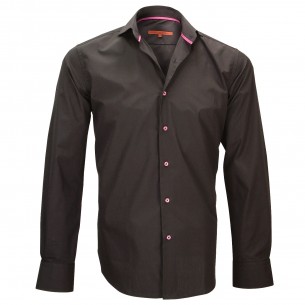
Sales
Shirt popelin fabric
BLAKE
Cut REGULAR FIT
33€56
Instead of
47€95See product >
-
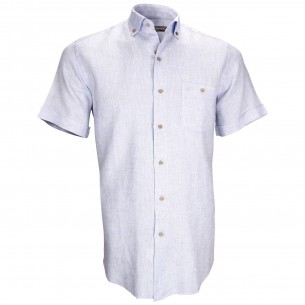
Sales
Shirt 100% linen
SAN REMO
Cut REGULAR FIT
38€50
Instead of
55€00See product >
-
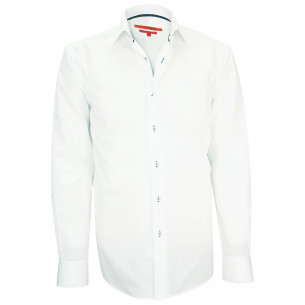
Sales
Fashion shirt
NEWPORT
Cut REGULAR FIT
33€60
Instead of
48€00See product >
View men's shirts of the week
Offers
Don’t miss it
New men’s collection
To discover
Our favorites
Enjoy it
our best
sales
